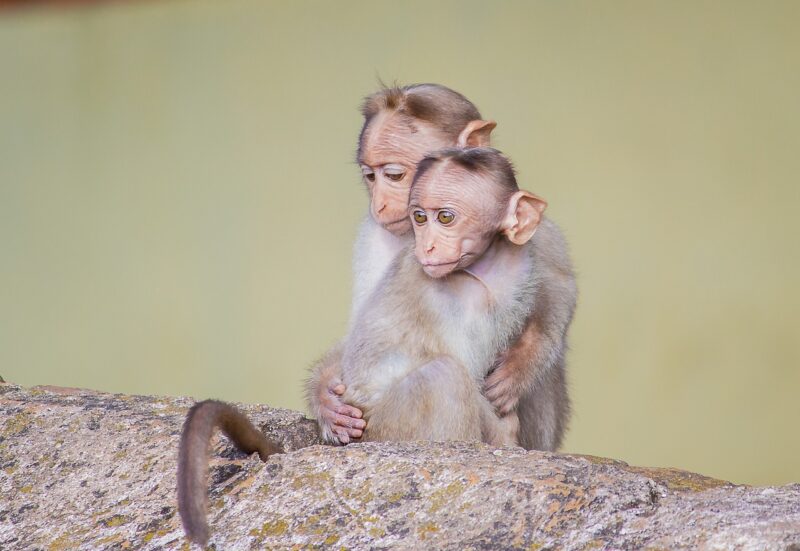How Early Monkeys Paved the Way for the Evolution of Great Apes and Humans
November 14, 2024

The journey of evolution from early primates to modern humans is a monumental saga filled with fascinating turns and unusual adaptations. Among the first players in this evolutionary drama were the early monkeys, whose developments laid the groundwork for the evolution of great apes and ultimately, human beings.
In this article, we’ll explore how these early primates’ characteristics, behaviors, and environments contributed to significant evolutionary shifts that influence us to this day.
1. The Origins of Early Monkeys
The evolution of early monkeys dates back to about 50 million years ago. These primates were among the first to adapt to a life of arboreal existence, spending most of their time in trees. Early monkeys belonged to a group known as Eocene primates, which emerged after the extinction of dinosaurs, in a rapidly changing environment dominated by forests.
These monkeys were smaller, more agile, and had a dietary preference focused on fruit, flowers, and insects. Their ability to thrive in trees marked a significant evolutionary milestone that paved the way for future adaptations and evolution.
2. Distinctive Characteristics of Early Monkeys
One of the crucial aspects of early monkeys that facilitated future evolutionary developments was their unique anatomical features. Consider the following key adaptations:
- Grasping Hands and Feet: Early monkeys developed opposable thumbs and big toes that allowed them to grasp branches effectively, an essential trait for life in an arboreal environment.
- Forward-Facing Eyes: This adaptation enabled depth perception and improved their ability to navigate through trees and spot predators or prey from a distance.
- Flexible Social Structures: Early monkeys exhibited social behaviors and group living, which would later become evident in great apes, promoting cooperation and communication essential for survival.
These adaptations were vital for their survival and had profound implications for the subsequent evolution of larger and more complex primates.
3. The Split: How Early Monkeys Led to Great Apes
The evolutionary tree splits to showcase the divergence of early monkeys into various lineages. About 25 to 30 million years ago, two significant groups emerged:
- Platyrrhines (New World Monkeys): These were characterized by flat noses and a wide range of adaptive traits that facilitated life in the trees of the Americas.
- Catarrhines (Old World Monkeys and Apes): These primates, with narrow nostrils, evolved into two further significant branches, leading to modern-day monkeys and later, hominoids such as gibbons, orangutans, gorillas, chimpanzees, and finally, humans.
This split represented a crucial point in evolution, as it set the stage for the development of large-brained hominids, including our direct ancestors.
4. The Journey to Bipedalism
Around 6 to 7 million years ago, the evolutionary road began to favor bipedalism—walking on two legs. This trait had profound ramifications for future hominins, enabling a range of new capabilities:
- Freeing the Hands: With an upright posture, early humans could use their hands for tool-making, leading to significant advancements in technology and culture.
- Improved Vision: Bipedalism provided greater visibility of the surroundings in the open savannas, assisting in spotting predators and prey effectively.
- Thermoregulation: Standing upright minimized the sun’s exposure to direct sunlight, providing an evolutionary advantage in hotter climates and promoting survival in open environments.
These adaptations made possible the emergence of species such as Australopithecus, which would eventually lead to modern humans.
5. Social Structures and Communication: The Foundation for Humanity
From early monkeys to modern humans, social structures and communication have evolved significantly. Early primates began to form complex social groups with established hierarchies, relying on cooperation and teamwork for survival.
Additionally, the development of communication—ranging from vocalizations to body language—enabled these primates to share information about food sources, predators, and territory. This communication laid the groundwork for complex language skills observed in humans today, further securing social bonds and cultural traditions among groups.
6. The Importance of Environmental Adaptations
As environments fluctuated, early monkeys—along with their evolutionary descendants—adapted in ways that ensured their survival. From the lush, wooded forests to open savannas, these adaptations included:
- Dietary Flexibility: The ability to consume a varied diet, including fruits, leaves, and insects, granted early primates a survival advantage across different environments.
- Adaptive Locomotion: Primarily arboreal, these early monkeys and their descendants evolved to be equally adept at moving through trees and on the ground, providing necessary flexibility (e.g., the ability to traverse both forested and open landscapes).
Such environmental adaptability ensured their survival through significant climatic and ecological changes that shaped the planet.
Conclusion: A Legacy of Evolution
The story of how early monkeys paved the way for the evolution of great apes and humans is a captivating tale of adaptation, resilience, and complexity. Through their unique adaptations in anatomy, behavior, and social structures, these early primates laid a foundation for modern evolutionary trajectories that continue to shape the human experience in profound ways.
Understanding these evolutionary links not only enriches our comprehension of biology but also our connection to the animal kingdom that we share the planet with today.
Reflecting on this journey reminds us of the intricate web of life that connects us all and the evolutionary legacy that defines our existence.








